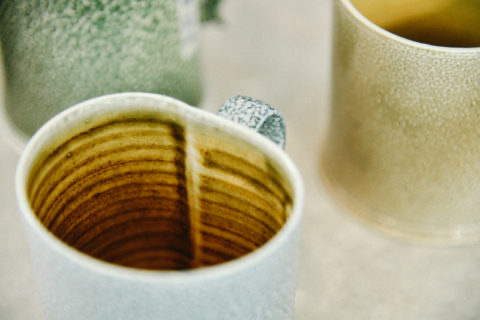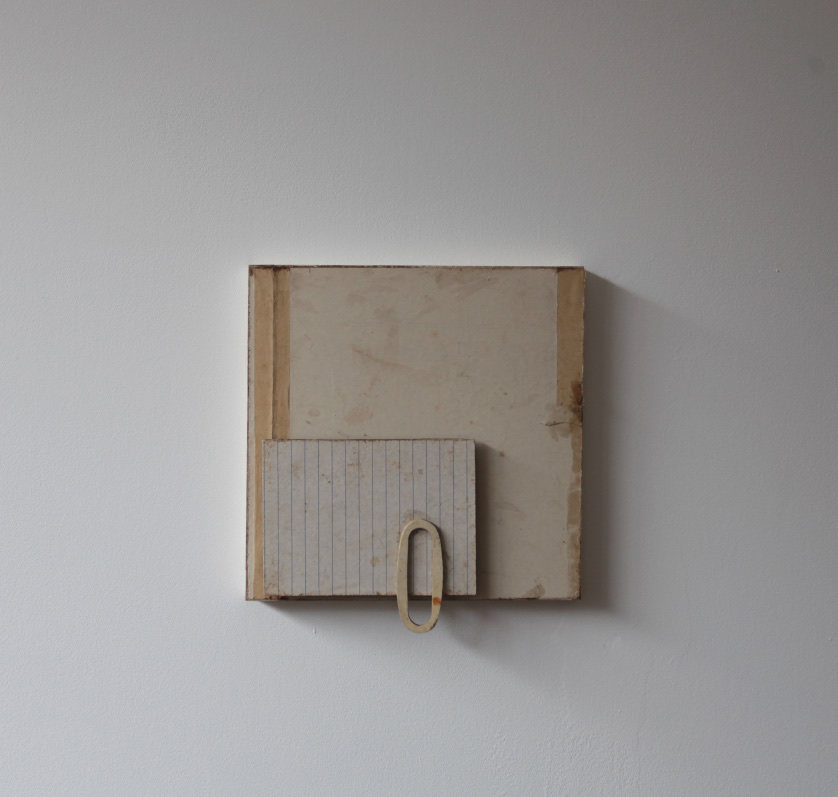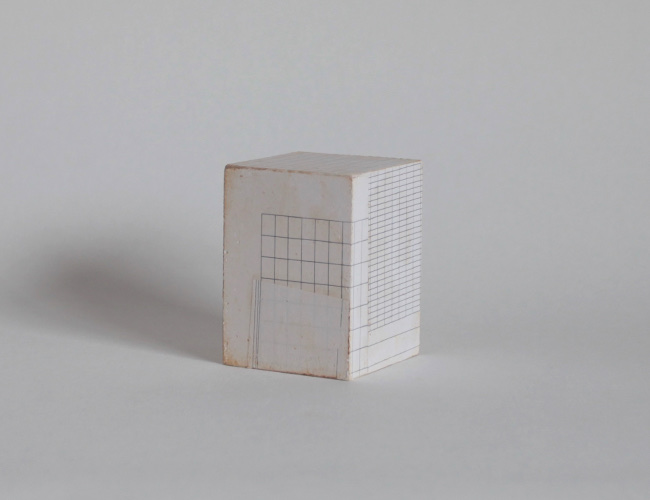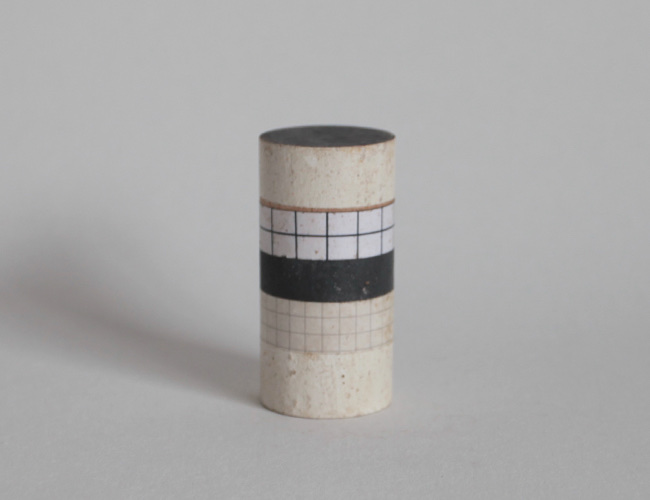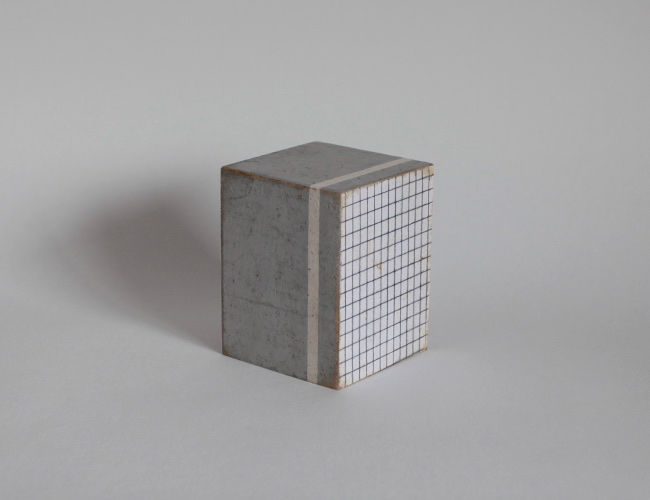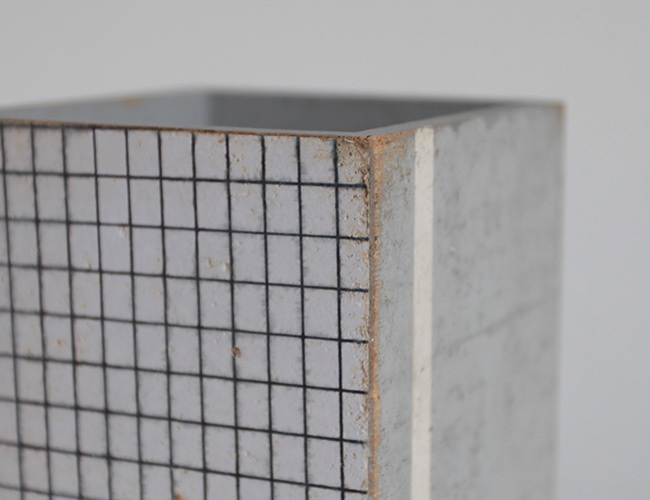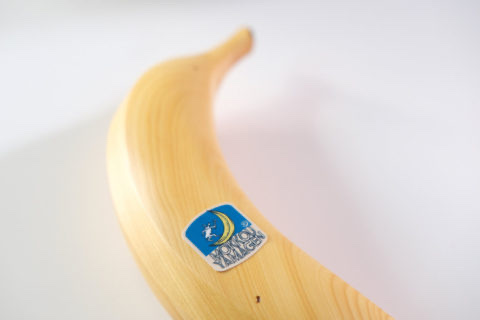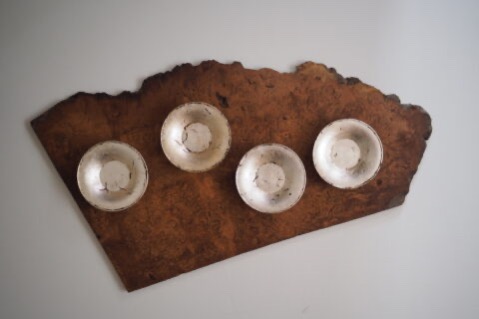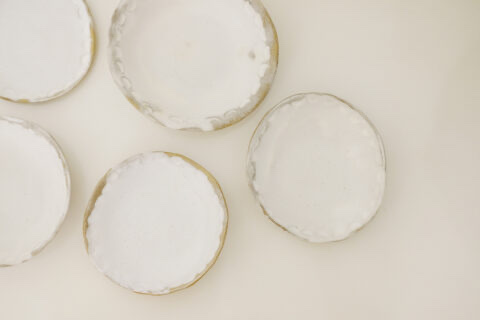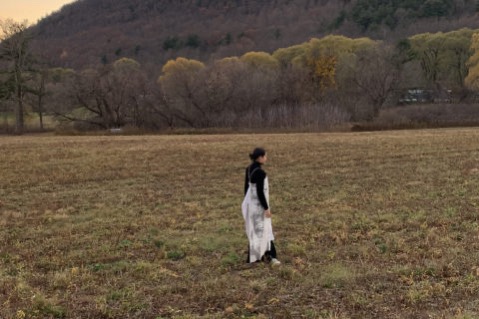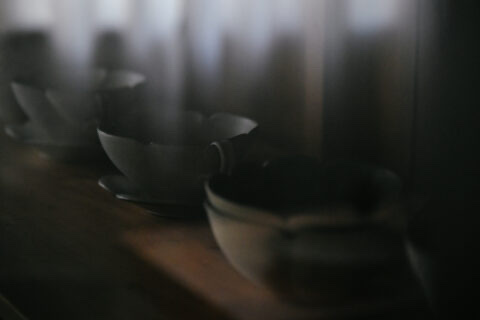「我使用的都是看似被人們丟棄的材料,因此,若只單看素材的話,有些會被認為垃圾吧。但是,若由這些東西拼湊組合後造出的作品,能使觀者想像出各種各樣的故事的話,我會感到很高興的。」岩田美智子如此形容自己造的紙製作品。
首次看到岩田美智子的作品,是在朋友的家裡——廁紙卷芯形狀的透明膠筒裡,塞了幾張捏皺的廢紙。我看得大惑不解,它像是被隨手扔掉的東西,又像是刻意拼組而成的。丟到垃圾筒裡也不失為過,但朋友珍而重之地掛在起居室的角落裡時,它又流露著某種奇妙的動人氣質。
今年63歲的岩田美智子,大學修讀的是產業社會學,畢業後卻往歐洲各地學習設計及銅版畫,回國後,她曾好幾年專注於平面創作,至40歲左右,才開始以紙及木材作為主要的創作媒介。
岩田美智子最為人熟知的是盒子系列,一個一個木製的箱子上,貼上了層層舊紙片,令人聯想到色彩斑爛,但在歲月了褪了色、脫了皮的建築物,又或是貼了廣告的圍牆——紙片層層相疊,在風吹雨打過後紙片與圍牆相融了。近年來,她開始以相同的手法製作不同的幾何立體圖形,並拼湊一起成為雕塑作品,這次,岩田美智子關心的是立體圖形間的距離的差異,會為作品注入怎樣不同的氣氛。由於作品裡每個配件都是獨立的、可活動的,雕塑的擁有者可以自由調節配件的距離。「擁有者可根據自己當天的、當刻的心情,重新作配置。希望他們能像玩藝術拼圖(?)般,在日常生活裡享受它帶來的樂趣。」岩田美智子,這說故事人,把編修故事的權利交給觀者了。
“The materials I use all look like something that people have disposed of. If we’re only looking at the materials, they can be easily taken as garbage. However, I would be very pleased to know if the artwork that I made using these materials can inspire people of stories,” this is how Michiko Iwata interprets her paper artworks.
The first time I saw Iwata’s work was at a friend’s place. I was utterly confused by this transparent plastic thing that looked like a toilet paper roll with crumpled paper stuck inside. I had no idea whether someone had made it deliberately, or is it just another random piece of trash. Although no one would probably question if this ended up in the bin, my friend hung it in the living room with such care that I could actually see some intriguing charm in it.
Michiko Iwata is now at the age of 63. Majored in Industrial Sociology in university, Iwata took an unexpected turn to travel to Europe to learn about design and copper plate etching. Upon returning to Japan, she spent years focussing on her career in graphic design. It was only until when she reached her 40s did she begin to use paper and wood as the primary media of art.
Iwata’s most known work is her Box series, where she glued layers and layers of used paper on wooden boxes. It reminds one of the colorful paper collage glued on the facade of a building that survived wind and rain, slowly having the vivid colors fading away. In recent years, she began another series with a similar design. She first applied paper to cones and other three-dimensional geometric shapes, afterward, she put them together as a set of sculpture. Iwata’s central concern for this series is how to create different moods by adjusting the distance between the three-dimensional shapes. Since each item of the series can all stand alone and be movable, the owners of the sculpture have the freedom to move them around to adjust their position. “The owners can rearrange them according to their current mood. I hope they can see this as an artistic puzzle and feel the joy the sculpture can bring to their everyday life.” Michiko Iwata, the storyteller, has decided to let her audience edit the story for her most recent series.
